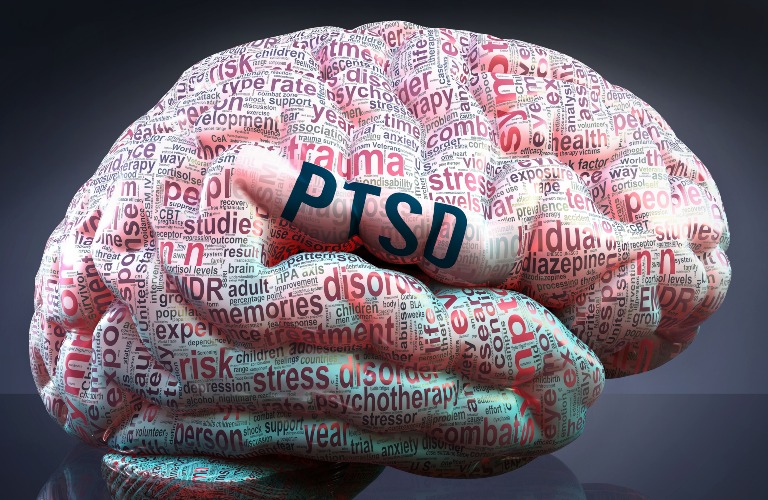
PTSD is the 6th most-rated disability among veterans. In fact, around 12.9% of veterans have the disorder which is double the incidence rate of the general population. Some estimates say that the incidence rate among veterans is likely much higher but many go undiagnosed. Are you pursuing a disability rating with the VA for your PTSD? What is the most common VA rating for PTSD? Tabak Law will answer all that and more!
How Does the VA Rate PTSD With Multiple Symptoms?
PTSD is a complicated disorder. It’s complicated because PTSD can present with a multitude of symptoms. Identifying and understanding those symptoms is going to be key to determining what rating your PTSD gets.
So if PTSD typically presents with multiple symptoms, how is the VA going to make a determination for your PTSD symptoms specifically? The VA SHOULD look at your highest-rated symptom or symptoms and give you the disability rating based on that. They should not take an average or consider lower-rated symptoms over your highest-rated symptoms.
Does Gulf War Illness Qualify You for VA Benefits?
What About PTSD Symptoms That Aren’t Always Present?
What if you have a symptom such as suicidal thoughts or ideations, but like most people with these symptoms, you do not have these symptoms at all times? It SHOULDN’T matter. No matter the frequency or even the intent of those symptoms, you should still get the rating that the symptom demands even if it’s not always present.
Oftentimes the VA may attempt to minimize symptoms to reduce your disability level and reduce your benefits, but you cannot accept that. You can still fight for your right to a higher disability rating based on your symptoms, and often getting legal help is the key.
Read More: How Long After Separation Can You File a VA Claim?
Typical VA Disability Rating for PTSD
In truth, there is no such thing as typical PTSD. Everyone with PTSD is going to experience it a little differently. This is why you can find PTSD ratings from all across the spectrum. One of the most common ratings for PTSD is 70%, but there are many rated at 50%, 30%, and 10% as well. You can also have your PTSD acknowledged and listed as service-connected but still get a 0% rating. Having a 100% rating for PTSD is also possible, but rare.
Let us summarize what these ratings mean for PTSD:

- 0%—Essentially, you have PTSD but it does not interfere with occupational or social functioning and does not require continuous medication.
- 10%—Here your PTSD may impair your occupational work during periods of high stress and symptoms controlled by continuous medication.
- 30%—intermittent periods of inability to perform occupational tasks, due to such symptoms as depressed mood, anxiety, suspiciousness, panic attacks, chronic sleep impairment, and/or mild memory loss.
- 50%—This level is often characterized by panic attacks more than once a week, difficulty in understanding complex commands, impairment of short- and long-term memory, impaired judgment, disturbances of motivation and mood, and/or difficulty in establishing and maintaining effective work and social relationships.
- 70%—A 70% rating will usually include symptoms like suicidal ideation, obsessional rituals that interfere with routine activities, near-continuous panic or depression, impaired impulse control, spatial disorientation, neglect of personal appearance and hygiene, difficulty in adapting to stressful circumstances, and/or inability to establish and maintain effective relationships.
- 100%—The symptoms that qualify you for a 100% rating include gross impairment in thought processes or communications, persistent delusions or hallucinations, grossly inappropriate behavior, persistent danger of hurting self or others, intermittent inability to perform activities of daily living, disorientation to time or place, and/or memory loss for names of close relatives, own occupation, or own name.
How Much is 100% VA Disability in 2023?
Get Legal Help With Your VA Rating From Tabak Law
We have years of experience working on veteran’s benefits cases and we are ready to get to work for you. We can help you get a rating increase for your PTSD or any other service-connected condition that you may have. Reach out to us today for a free case review!
Nothing posted on this website is intended, nor should be construed, as legal advice. Blog postings and site content are available for general education purposes only.
